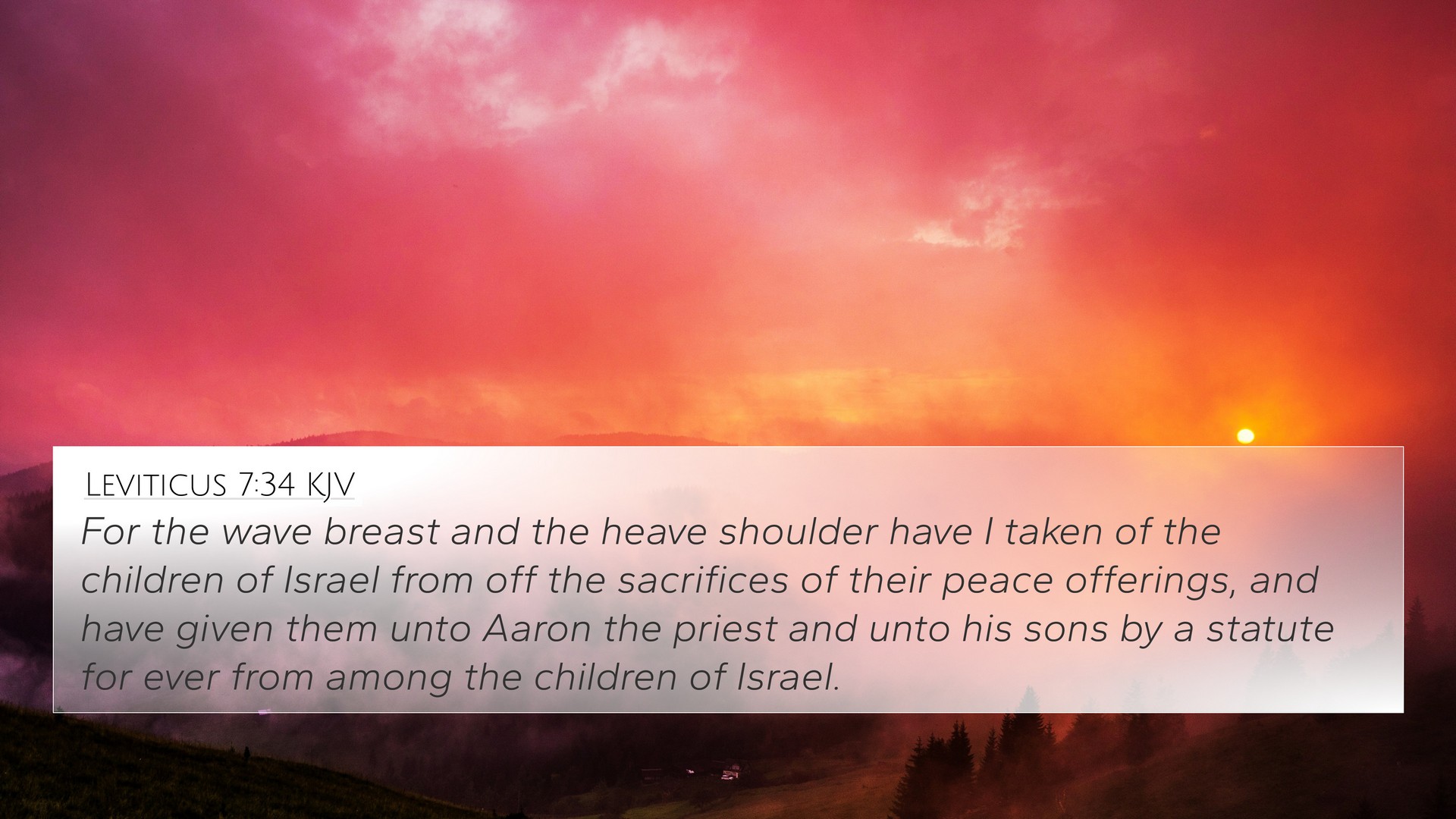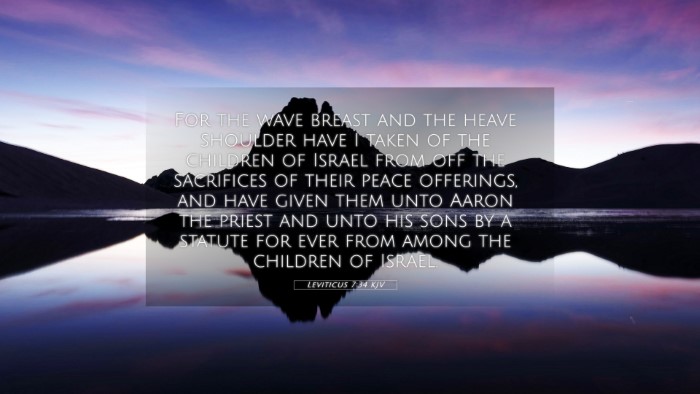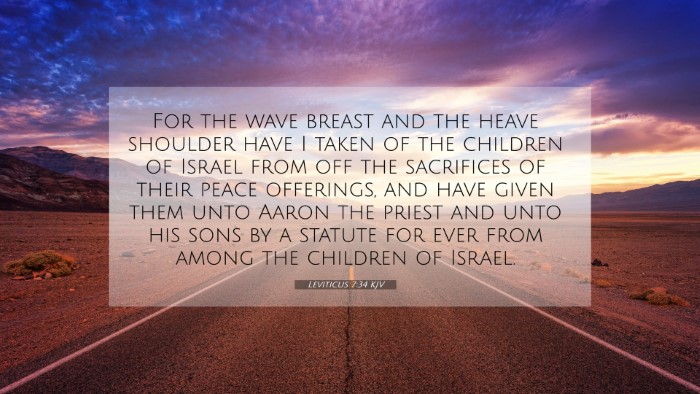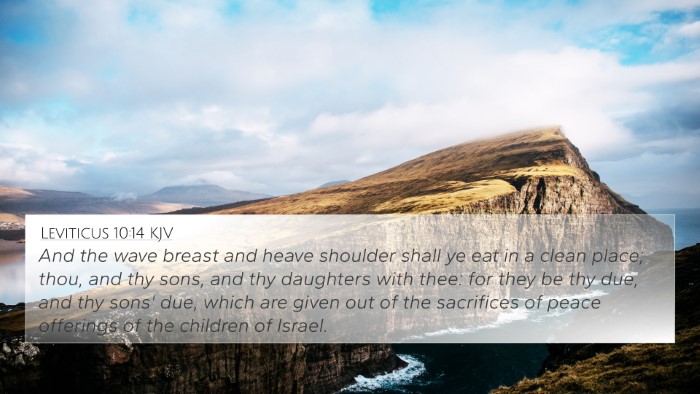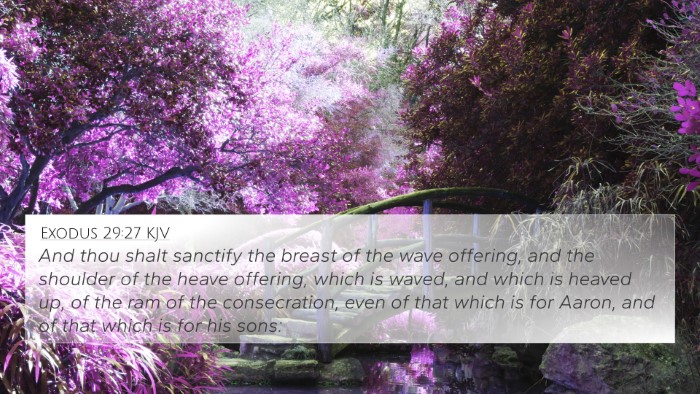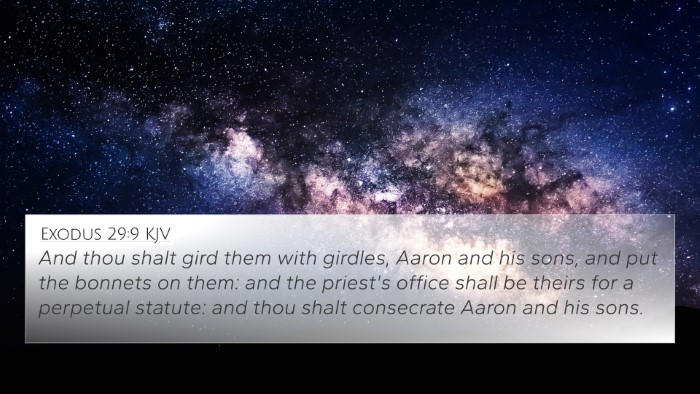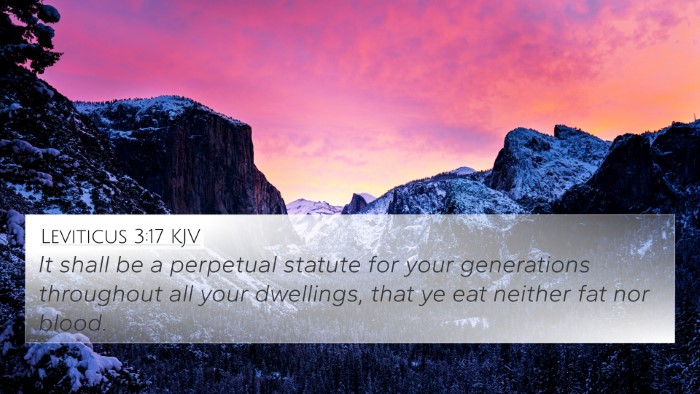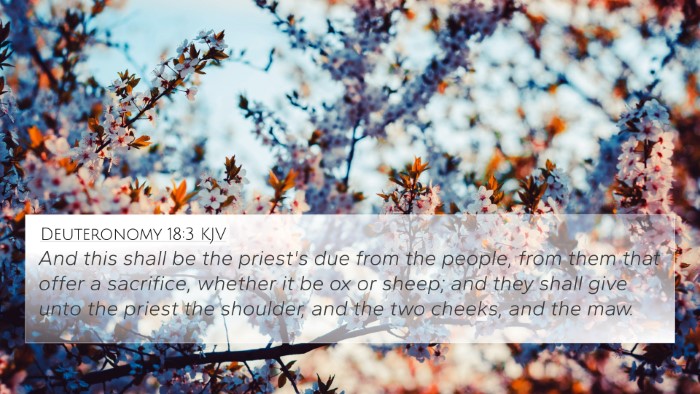Understanding Leviticus 7:34
Leviticus 7:34 states: "For the wave breast and the heave shoulder have I taken of the children of Israel from off the sacrifices of their peace offerings, and have given them unto Aaron the priest and unto his sons by a statute for ever from among the children of Israel."
Summary of the Verse
This verse highlights the specific portions of the peace offerings that were designated for the priests, Aaron and his sons. The wave breast and the heave shoulder are both portions of the offering that symbolize God's provision for the priestly tribe. These elements signify the relationship between God and His people, showing both gratitude and acknowledgment of the priesthood's role in mediating between God and humanity.
Commentary Insights
Matthew Henry's Commentary
Matthew Henry emphasizes the importance of the wave breast and the heave shoulder, noting that they were not simply a reward for the priests, but a deliberate act of God to set apart a portion of the offerings for those who served in the temple. This act serves as a reminder of the holiness associated with sacrifices and the ongoing need for the community to support their spiritual leaders.
Albert Barnes’ Commentary
Albert Barnes highlights the permanent statute indicating that such offerings were integral to Israelite worship. The wave breast is an expression of dedication, while the heave shoulder signifies the priest's share in the offerings. Barnes draws attention to the ongoing nature of these provisions, suggesting that God ensures His servants are sustained through the faithfulness of His people.
Adam Clarke's Commentary
Adam Clarke provides a detailed explanation of the rituals associated with these offerings. He notes that the wave breast and heave shoulder not only served as sustenance for the priests but also represented the acknowledgment of their role in the sacrificial system, strengthening the communal ties between the Israelites and their leaders. Clarke also encourages understanding the symbolic nature of these offerings as expressions of gratitude to God.
Biblical Cross-References
- Exodus 29:27 - This verse discusses the consecration of Aaron and his sons, drawing connections with their sustaining portions from peace offerings.
- Leviticus 6:26 - Details the provisions for the priests concerning their portion of the offerings, underscoring the theme of sacred sustenance.
- Numbers 18:11 - Reinforces the idea that certain offerings are designated for the priests, enriching the context of Leviticus 7:34.
- Deuteronomy 18:3 - Discusses the rights of the priests concerning offerings, drawing a clear link to their roles in service to God and His people.
- 1 Corinthians 9:13-14 - Paul draws parallels between the Old Testament practices and the New Testament's recognition of spiritual leaders deserving support.
- Hebrews 7:5 - Discusses the Levitical priesthood and their rights to receive such offerings, highlighting the continuity of God's provision.
- John 10:12-13 - Jesus describes Himself as a good shepherd, leading to further reflections on the nature of support for spiritual leadership.
Thematic Connections
Leviticus 7:34 connects to various overarching themes in Scripture including:
- The Role of the Priesthood: The provision for priests is consistent throughout the Old Testament, highlighting their vital role in worship.
- God’s Provision: A recurring theme throughout the Bible is God’s promise to provide for those who serve Him, seen in numerous offerings.
- Sacrificial Law: The regulations surrounding offerings provide insight into the holiness and reverence necessary in worship.
- Community and Leadership: The interactions between the Israelite community and their leaders reflect broader principles of support and mutual responsibility.
- Thanksgiving and Acknowledgment: The act of offering signifies a community’s recognition of God’s blessings and their gratitude.
Conclusion
Leviticus 7:34 serves not only as a command for the Israelites regarding their offerings but also as a profound recognition of God's provision for those who lead in spiritual matters. Understanding this verse within its broader narrative context reveals links between different Biblical passages, emphasizing themes of the priesthood, community, and God’s sustenance.
Tools for Bible Study
Engaging with cross-references can deepen understanding of Biblical teachings. Here are some tools for effective Bible study:
- Bible Concordance: A valuable tool that lists words found in Scripture, helping find related verses.
- Bible Cross-reference Guide: Provides connections between verses that may not be immediately obvious.
- Cross-reference Bible Study: Techniques that encourage exploring related themes across different scriptures.
- Bible Reference Resources: Various published materials assist in finding thematic connections.
Further Exploration
For those seeking to delve deeper into the connections around Leviticus 7:34, consider exploring:
- Identifying connections between the Old and New Testament that reflect on priesthood and sacrifice.
- Comparative studies of offerings in the Gospels and epistles.
- Examining how themes in Psalms resonate with priestly roles in both Testaments.
